Cape Teal
Posted: Mon May 21, 2012 6:20 pm
106. Cape Teal Anas capensis (Teeleend)
Order: Anseriformes. Family: Anatidae
Description
44-46 cm. The palest duck of the region. Pale and mainly grey plumage. Browner back. Has a speckled head and slightly upturned pink bill. In flight, speculum white with green centre.
Sexes are similar. Female is darker on head and whiter below.
Juveniles are paler duller brown above than adults and lack the pink on the bill.
Distribution
Found mostly in and around South Africa, where it is locally abundant in the Western Cape, North-West Province and Free State Province.
Habitat
Open area of fresh or salt water, mainly in salty, brackish vleis.
Diet
It feeds mainly on invertebrates and tadpoles, with about a quarter of its diet plant matter. It feeds by filtering on the surface, or with the head and neck submerged.
Breeding
Monogamous, solitary nester. The female builds the nest, which is a 10-16 cm wide bowl, 6 cm deep. It is usually made of aquatic plant leaves and stems, lined with down and contour feathers, usually placed on reed-filled islands. It lays 4-13 eggs, in successive mornings. Incubation is done solely by the female, for 26-30 days. The chicks, once dry, are immediately led by their mother to the water, as they know how to dive and swim by instinct. They remain with their mother for about 56 days, after which they start to become independent.
Call
Generally silent; male gives a high-pitched swee-tseeu, female utters a deep nasal querk.
Status
Common resident. In pairs or mixed flocks with nomadic and partial migrant populations.
Order: Anseriformes. Family: Anatidae
Description
44-46 cm. The palest duck of the region. Pale and mainly grey plumage. Browner back. Has a speckled head and slightly upturned pink bill. In flight, speculum white with green centre.
Sexes are similar. Female is darker on head and whiter below.
Juveniles are paler duller brown above than adults and lack the pink on the bill.
Distribution
Found mostly in and around South Africa, where it is locally abundant in the Western Cape, North-West Province and Free State Province.
Habitat
Open area of fresh or salt water, mainly in salty, brackish vleis.
Diet
It feeds mainly on invertebrates and tadpoles, with about a quarter of its diet plant matter. It feeds by filtering on the surface, or with the head and neck submerged.
Breeding
Monogamous, solitary nester. The female builds the nest, which is a 10-16 cm wide bowl, 6 cm deep. It is usually made of aquatic plant leaves and stems, lined with down and contour feathers, usually placed on reed-filled islands. It lays 4-13 eggs, in successive mornings. Incubation is done solely by the female, for 26-30 days. The chicks, once dry, are immediately led by their mother to the water, as they know how to dive and swim by instinct. They remain with their mother for about 56 days, after which they start to become independent.
Call
Generally silent; male gives a high-pitched swee-tseeu, female utters a deep nasal querk.
Status
Common resident. In pairs or mixed flocks with nomadic and partial migrant populations.
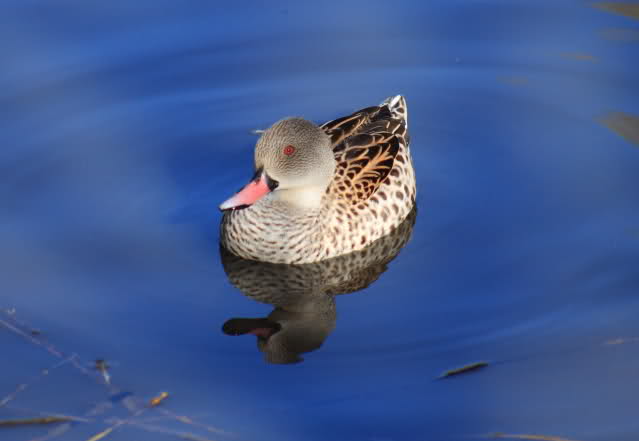 © Flutterby
© Flutterby © steamtrainfan
© steamtrainfan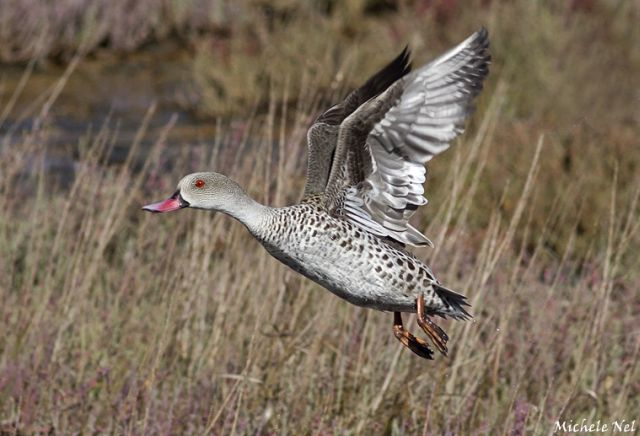 © Michele Nel
© Michele Nel
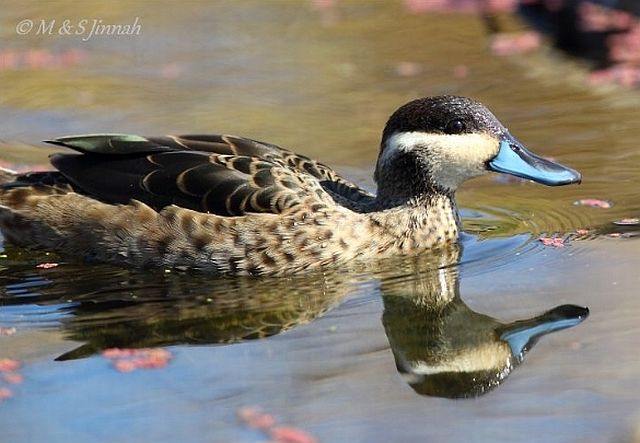 © Sharifa
© Sharifa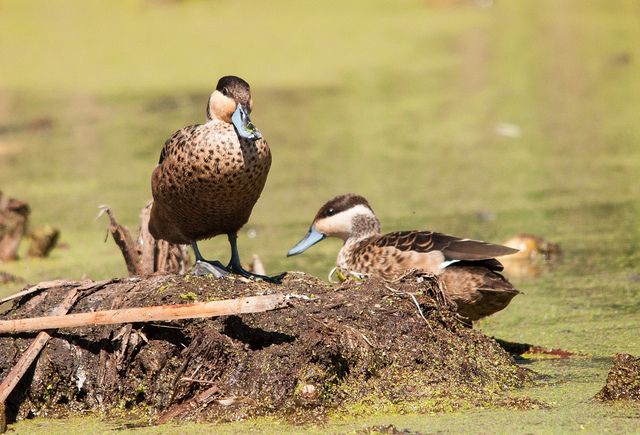 © steamtrainfan
© steamtrainfan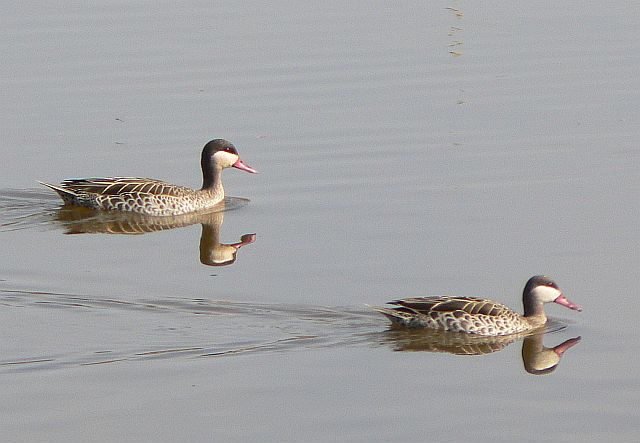 © Toko
© Toko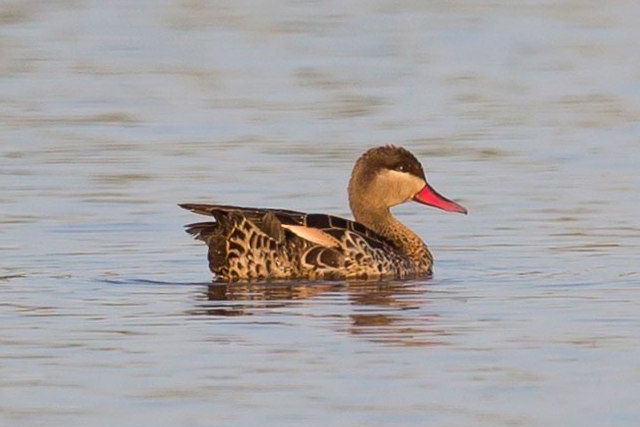 © Pumbaa
© Pumbaa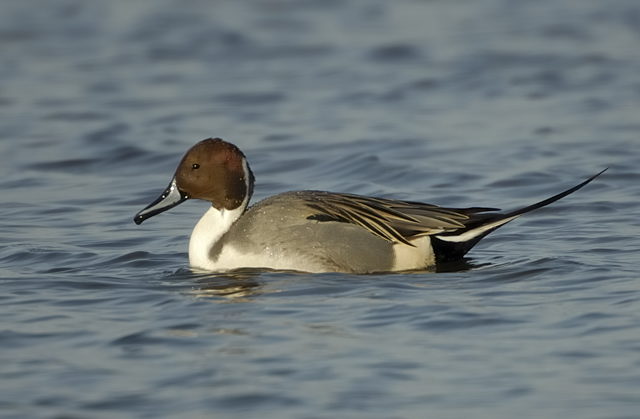
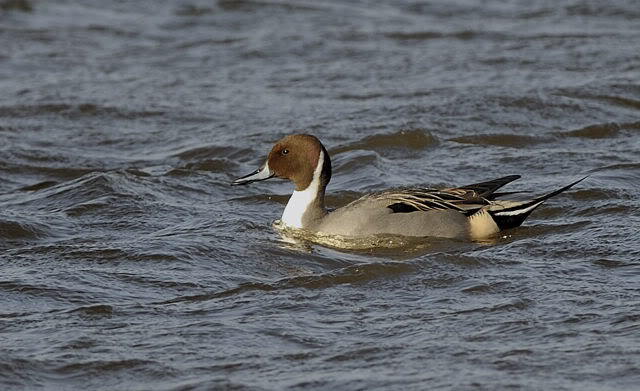


 © nan
© nan